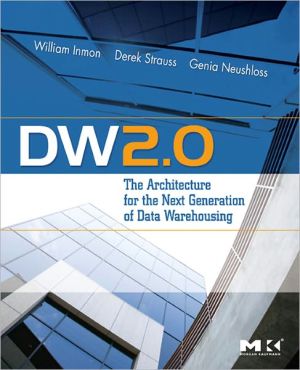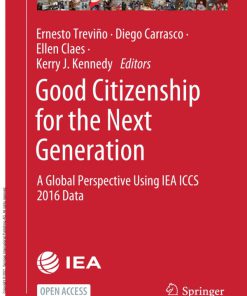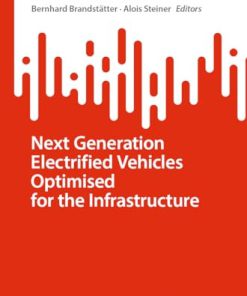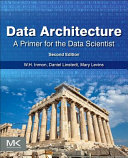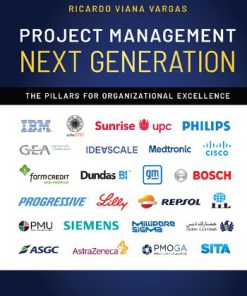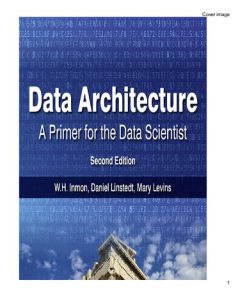DW 2 0 The Architecture for the Next Generation of Data Warehousing 1st Edition by Inmon, William H, Strauss, Derek, Neushloss, Genia 9780080558332 008055833X
$50.00 Original price was: $50.00.$25.00Current price is: $25.00.
DW 2 0 The Architecture for the Next Generation of Data Warehousing 1st Edition Inmon William H Strauss Derek Neushloss Genia – Ebook PDF Instant Download/Delivery, ISBN: 9780080558332, 008055833X
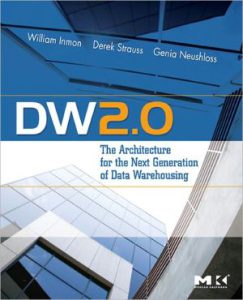
Product details:
- ISBN 10: 008055833X
- ISBN 13:9780080558332
- Author: Inmon, William H, Strauss, Derek, Neushloss, Genia
DW 2.0: The Architecture for the Next Generation of Data Warehousing: The Architecture for the Next Generation of Data Warehousing
There are many kinds of data warehouses, in large part due to evolution and different paths of software and hardware vendors. But DW 2.0, defined by this author in many talks, articles, and his b-eye-network newsletter that reaches 65,000 professionals monthly, is the well-identified and defined next generation data warehouse.
The book carries that theme and describes the future of data warehousing that is technologically possible now, at both an architectural level and technology level. The perspective of the book is from the top down: looking at the overall architecture and then delving into the issues underlying the components. The benefit of this for people who are building or using a data warehouse can see what lies ahead, and can determine: what new technology to buy, how to plan extensions to the data warehouse, what can be salvaged from the current system, and how to justify the expense–at the most practical level.
All of this gives the experienced data warehouse professional everything and exactly what is needed in order to implement the new generation DW 2.0.
* First book on the new generation of data warehouse architecture, DW 2.0.
* Written by the “father of the data warehouse”, Bill Inmon, a columnist and newsletter editor of The Bill Inmon Channel on the Business Intelligence Network.
* Long overdue comprehensive coverage of the implementation of technology and tools that enable the new generation of the DW: metadata, temporal data, ETL, unstructured data, and data quality control.
Table contents:
1 A brief history of data warehousing and first-generation data warehouses
Data base management systems
Online applications
Personal computers and 4GL technology
The spider web environment
Evolution from the business perspective
The data warehouse environment
What is a data warehouse?
Integrating data„a painful experience
Volumes of data
A different development approach
Evolution to the DW 2.0 environment
The business impact of the data warehouse
Various components of the data warehouse environment
ETL„extract/transform/load
ODS„operational data store
Data mart
Exploration warehouse
The evolution of data warehousing from the business perspective
Other notions about a data warehouse
The active data warehouse
The federated data warehouse approach
The star schema approach
The data mart data warehouse
Building a “real” data warehouse
Summary
2 An introduction to DW 2.0
DW 2.0„a new paradigm
DW 2.0„from the business perspective
The life cycle of data
Reasons for the different sectors
Metadata
Access of data
Structured data/unstructured data
Textual analytics
Blather
The issue of terminology
Specific text/general text
Metadata„a major component
Local metadata
A foundation of technology
Changing business requirements
The flow of data within DW 2.0
Volumes of data
Useful applications
DW 2.0 and referential integrity
Reporting in DW 2.0
Summary
3 DW 2.0 components„about the different sectors
The Interactive Sector
The Integrated Sector
The Near Line Sector
The Archival Sector
Unstructured processing
From the business perspective
Summary
4 Metadata in DW 2.0
Reusability of data and analysis
Metadata in DW 2.0
Active repository/passive repository
The active repository
Enterprise metadata
Metadata and the system of record
Taxonomy
Internal taxonomies/external taxonomies
Metadata in the Archival Sector
Maintaining metadata
Using metadata„an example
From the end-user perspective
Summary
5 Fluidity of the DW 2.0 technology infrastructure
The technology infrastructure
Rapid business changes
The treadmill of change
Getting off the treadmill
Reducing the length of time for IT to respond
Semantically temporal, semantically static data
Semantically temporal data
Semantically stable data
Mixing semantically stable and unstable data
Separating semantically stable and unstable data
Mitigating business change
Creating snapshots of data
A historical record
Dividing data
From the end-user perspective
Summary
6 Methodology and approach for DW 2.0
Spiral methodology„a summary of key features
The seven streams approach„an overview
Enterprise reference model stream
Enterprise knowledge coordination stream
Information factory development stream
Data profiling and mapping stream
Data correction stream
Infrastructure stream
Total information quality management stream
Summary
7 Statistical processing and DW 2.0
Two types of transactions
Using statistical analysis
The integrity of the comparison
Heuristic analysis
Freezing data
Exploration processing
The frequency of analysis
The exploration facility
The sources for exploration processing
Refreshing exploration data
Project-based data
Data marts and the exploration facility
A backflow of data
Using exploration data internally
From the perspective of the business analyst
Summary
8 Data models and DW 2.0
An intellectual road map
The data model and business
The scope of integration
Making the distinction between granular and summarized data
Levels of the data model
Data models and the Interactive Sector
The corporate data model
A transformation of models
Data models and unstructured data
From the perspective of the business user
Summary
9 Monitoring the DW 2.0 environment
Monitoring the DW 2.0 environment
The transaction monitor
Monitoring data quality
A data warehouse monitor
The transaction monitor„response time
Peak-period processing
The ETL data quality monitor
The data warehouse monitor
Dormant data
From the perspective of the business user
Summary
10 DW 2.0 and security
Protecting access to data
Encryption
Drawbacks
The firewall
Moving data offline
Limiting encryption
A direct dump
The data warehouse monitor
Sensing an attack
Security for near line data
From the perspective of the business user
Summary
11 Time-variant data
All data in DW 2.0„relative to time
Time relativity in the Interactive Sector
Data relativity elsewhere in DW 2.0
Transactions in the Integrated Sector
Discrete data
Continuous time span data
A sequence of records
Nonoverlapping records
Beginning and ending a sequence of records
Continuity of data
Time-collapsed data
Time variance in the Archival Sector
From the perspective of the end user
Summary
12 The flow of data in DW 2.0
The flow of data throughout the architecture
Entering the Interactive Sector
The role of ETL
Data flow into the Integrated Sector
Data flow into the Near Line Sector
Data flow into the Archival Sector
The falling probability of data access
Exception-based flow of data
From the perspective of the business user
Summary
13 ETL processing and DW 2.0
Changing states of data
Where ETL fits
From application data to corporate data
ETL in online mode
ETL in batch mode
Source and target
An ETL mapping
Changing states„an example
More complex transformations
ETL and throughput
ETL and metadata
ETL and an audit trail
ETL and data quality
Creating ETL
Code creation or parametrically driven ETL
ETL and rejects
Changed data capture
ELT
From the perspective of the business user
Summary
14 DW 2.0 and the granularity manager
The granularity manager
Raising the level of granularity
Filtering data
The functions of the granularity manager
Home-grown versus third-party granularity managers
Parallelizing the granularity manager
Metadata as a by-product
From the perspective of the business user
Summary
15 DW 2.0 and performance
Good performance„a cornerstone for DW 2.0
Online response time
Analytical response time
The flow of data
Queues
Heuristic processing
Analytical productivity and response time
Many facets to performance
Indexing
Removing dormant data
End-user education
Monitoring the environment
Capacity planning
Metadata
Batch parallelization
Parallelization for transaction processing
Workload management
Data marts
Exploration facilities
Separation of transactions into classes
Service level agreements
Protecting the Interactive Sector
Partitioning data
Choosing the proper hardware
Separating farmers and explorers
Physically group data together
Check automatically generated code
From the perspective of the business user
Summary
16 Migration
Houses and cities
Migration in a perfect world
The perfect world almost never happens
Adding components incrementally
Adding the Archival Sector
Creating enterprise metadata
Building the metadata infrastructure
SwallowingŽ source systems
ETL as a shock absorber
Migration to the unstructured environment
From the perspective of the business user
Summary
17 Cost justification and DW 2.0
Is DW 2.0 worth it?
Macro-level justification
A micro-level cost justification
Company B has DW 2.0
Creating new analysis
Executing the steps
So how much does all of this cost?
Consider company B
Factoring the cost of DW 2.0
Reality of information
The real economics of DW 2.0
The time value of information
The value of integration
Historical information
First-generation DW and DW 2.0„the economics
From the perspective of the business user
Summary
18 Data quality in DW 2.0
The DW 2.0 data quality tool set
Data profiling tools and the reverse-engineered data model
Data model types
Data profiling inconsistencies challenge top-down modeling
Summary
19 DW 2.0 and unstructured data
DW 2.0 and unstructured data
Reading text
Where to do textual analytical processing
Integrating text
Simple editing
Stop words
Synonym replacement
Synonym concatenation
Homographic resolution
Creating themes
External glossaries/taxonomies
Stemming
Alternate spellings
Text across languages
Direct searches
Indirect searches
Terminology
Semistructured data/VALUE = NAME data
The technology needed to prepare the data
The relational data base
Structured/unstructured linkage
From the perspective of the business user
Summary
20 DW 2.0 and the system of record
Other systems of record
From the perspective of the business user
Summary
21 Miscellaneous topics
Data marts
The convenience of a data mart
Transforming data mart data
Monitoring DW 2.0
Moving data from one data mart to another
Bad data
A balancing entry
Resetting a value
Making corrections
The speed of movement of data
Data warehouse utilities
Summary
22 Processing in the DW 2.0 environment
Summary
23 Administering the DW 2.0 environment
The data model
Architectural administration
Defining the moment when an Archival Sector will be needed
Determining whether the Near Line Sector is needed
Metadata administration
Data base administration
Stewardship
Systems and technology administration
Management administration of the DW 2.0 environment
Prioritization and prioritization conflicts
Budget
Scheduling and determination of milestones
Allocation of resources
Managing consultants
People also search:
dw 2 0 the architecture
dwa architecture
what are the 3 architectural views of dodaf
design 2 architecture
dw in architecture
You may also like…
Politics & Philosophy - Social Sciences
Romance - Other Romance Categories
Malcolm Henchmen MC Next Generation 2 1st Edition by Jessica Gadziala 9798534575842
Technique - Transport
Technique - Nanotechnology
Nanoelectronics for Next-Generation Integrated Circuits 1st Edition Rohit Dhiman
Religion & Spirituality - Christianity
Computers - Databases
Biology and other natural sciences - Genetics
Next-Generation Sequencing Data Analysis 2nd Edition Xinkun Wang
Business & Economics - Project Management
Computers - Databases

